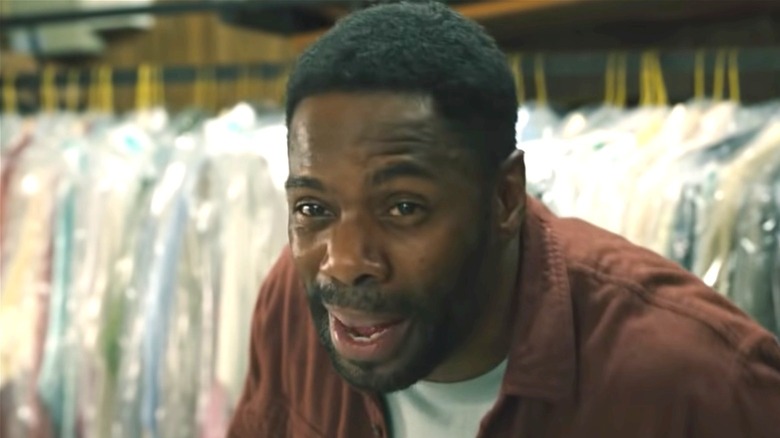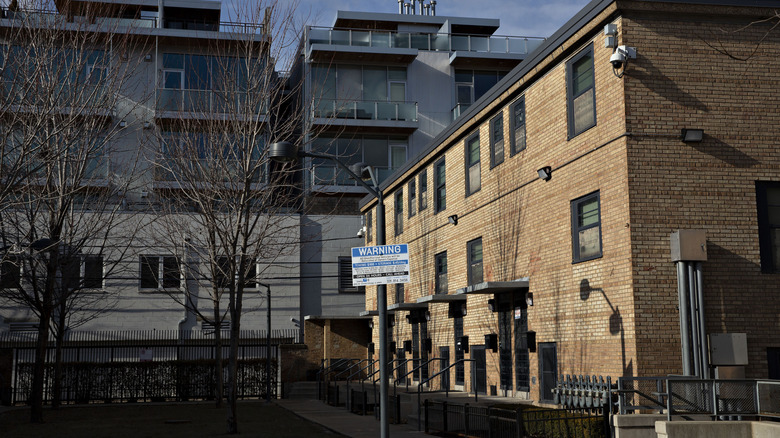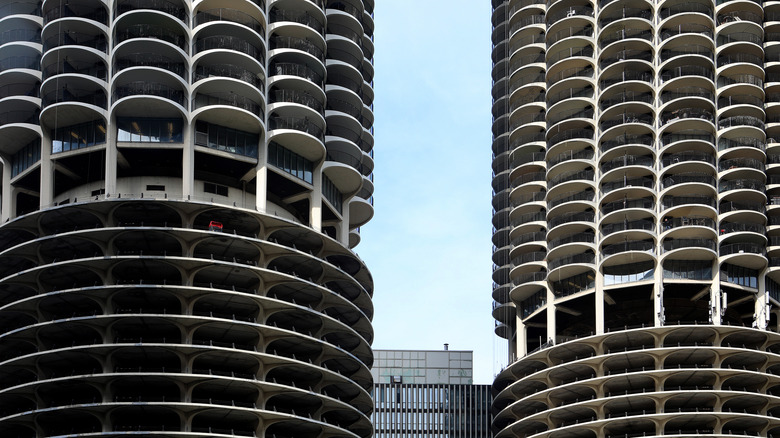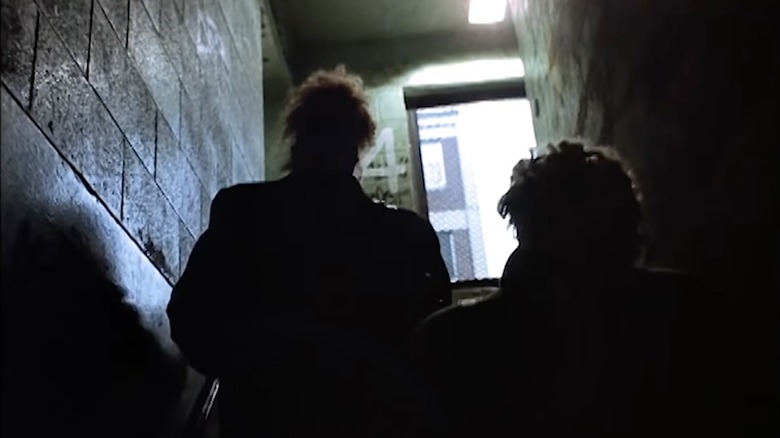Where Was Candyman Actually Filmed?
Today marks the official debut of the horror film "Candyman," which has been getting good reviews as it gets ready for its delayed theater-exclusive release. Along with offering a Jordan Peele-style supernatural slasher with social commentary, the movie gives viewers a sneak peek at director Nia DaCosta's skill in bringing a script to life, which may bode well for her turn as director of the Marvel Cinematic Universe's "The Marvels," set for a 2022 release.
"Candyman" offers atmospheric thrills and chills in a setting that's as alive as any character in the film, so it's natural for fans to wonder where the movie was filmed. The movie takes place in the notorious Cabrini-Green area of Chicago, in the near north side, once the site of a real-life high-rise housing project that provided homes for more than 15,000 low-income people (via WBEZ). Most of the Cabrini-Green towers were torn down a decade ago as part of a plan to re-develop the land, displacing many of its residents and removing a part of the Second City's history. This history is a major part of the movie's plot — its characters move into a gentrified Cabrini-Green and the Candyman lore stems from a real sense of place. But was "Candyman" actually filmed there?
Much of the film was shot at Cabrini-Green
"Candyman" was indeed filmed on location entirely in Chicago. It came specifically to Cabrini-Green, where some of the original 1942 row houses still stand. In fact, some of the scenes were filmed inside those houses in 2019. One of the movie's stars, Colman Domingo, was quoted in the press notes as saying (via Newsweek), "In Chicago, you look at the Cabrini location and where it is in relation to downtown and the Gold Coast. You see exactly the lure to tear it down and create something new. You wonder, 'Where were all these people displaced?' You can't just build affordable housing and then displace all these people throughout the city. It rips a hole out of the city. No matter what things have been said about Cabrini-Green, the crime, the drugs, these are people who are part of the fabric of the city. Then, suddenly, that's ripped out. It's a systemic problem in America."
The notorious, crime-ridden area, which was "gentrified" starting in 1995 and is still undergoing that process, was undoubtedly the site of many personal traumas related to low-income people's real lives being affected by politics. It makes Cabrini-Green a picture-perfect setting for a socially-conscious horror flick like "Candyman." Actor Yahya Abdul-Mateen II said in a press conference (via /Film), "Well, the story of 'Candyman,' the story of Cabrini-Green, is not only central to Cabrini-Green in Chicago. There's a Cabrini-Green all throughout the world and all throughout America. But to go to Chicago, specifically, I think it was really our duty to go back and to pay our respects."
Candyman was filmed at other Chicago locations as well
"Candyman" wasn't just filmed at Cabrini-Green. It also took advantage of its Chicago setting to film at several city locations, including the North Park neighborhood, the Kenwood neighborhood, the Museum of Contemporary Art (it was the first time a big feature had filmed inside the museum, the Chicago Tribune notes), the Old Cook County Hospital, and the Marina City apartment buildings/condos, which — if you're familiar with Chicago landmarks — are also known as the "corncob towers" next to the House of Blues.
DaCosta told the Chicago Sun-Times that Marina City was her favorite filming location, and also noted that it was important to her that some of the cast includes Chicago actors like Rebecca Spence and Carl Clemons-Hopkins. "I think for me the [Chicago cast] added a certain level of authenticity because they were like if there's something felt lost, they would correct it. That was so useful to have in the cast," she told the newspaper.
DaCosta said in a press conference (as reported by /Film) that she wanted to use and shoot in real locations, as compared to a soundstage. "And even when we did build, for example, we built a gallery, we built that in the neighborhood ... where the gallery would have been. We went to what I call the honeycomb buildings in Chicago to shoot there because we were like, those are amazing. We just do a lot to really make it feel as well as possible. So like, if you were from Chicago, you're like, 'Yep. That makes sense. Yes. That makes sense.' There's a restaurant we shoot in where our art friends in Chicago were like, 'Oh yeah, that's where everyone goes, for whatever.' And so it was about the themes and the visuals, but also about making something that felt authentic and real," she said.
The original Candyman also filmed briefly in Chicago
The original 1992 "Candyman" movie features a white college student played by Virginia Madsen who is searching for stories relating to the Candyman urban legend. Writer-director Bernard Rose did film in Chicago (via It's Filmed There), but for just six days, to add authenticity to a story based on a Clive Barker tale ("The Forbidden" from 1985) originally set in Liverpool, England. Rose told U.K.'s The Guardian that he picked Chicago "quite randomly," saying that he asked the Illinois Film Commission what the worst public-housing estate was in the city. "They wouldn't let us go there at first without a police escort. The social divide was really extreme compared to anything in a Liverpool housing estate. But despite its reputation, most people there were just getting on with their lives. The fear people had of walking around there was the very essence of racism — it is ultimately based on the fear of the other, or the unknown," the director said.
In a way, the new film is meant to reclaim Cabrini-Green and shift the perspective from what the previous film portrayed. Author Ben Austin, in his book "High-Risers: Cabrini-Green and the Fate of American Public Housing" said about the original (via The Chicago Tribune), "For me, one of the most amazing scenes is when Helen walks into that public bathroom in Cabrini-Green. This is the scariest place you could imagine in 1992 — a public bathroom in public housing. And then, in walks these guys who aren't Candyman, but who are appropriating the myth."
As the Tribune wrote, "The new 'Candyman' tackles the question of who gets to tell the stories, and how to deal with the looming phantom presence of Cabrini-Green itself." By filming completely in Chicago, "Candyman" gives the housing project life again.



